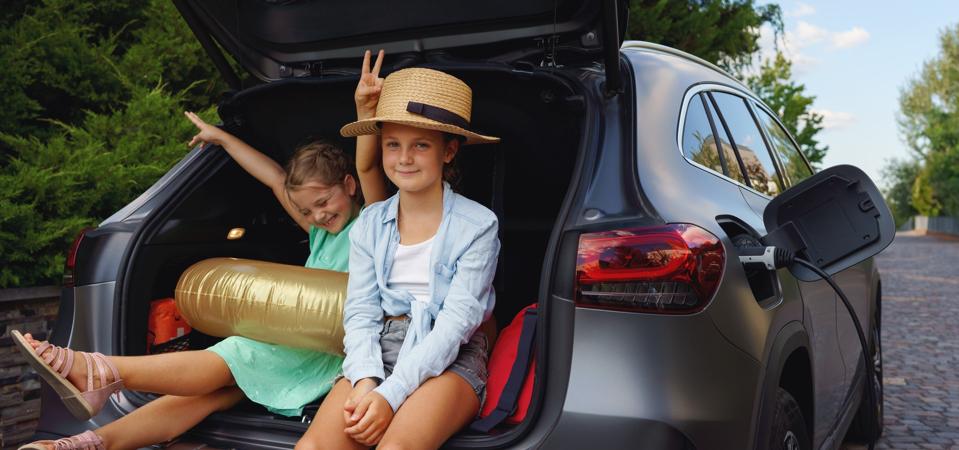Summer is here, and for millions of Americans, that means hitting the open road. While many are set to face higher gas prices in the coming months, electric vehicle drivers are counting on public charger reliability. For years, the idea of taking an EV on a long trip came with a disclaimer: plan carefully, cross your fingers, and hope the charger is working when you pull up.
Today, while advanced planning is still necessary, key metrics indicate that EV road trippers will depend less on luck and more on improved charging reliability. A J.D. Power study shows charging success rates increased to 84% in Q1 2025 from 80% a few years ago. Paren’s Q1 2025 State of the Industry Report considers fast charger uptime (the amount of time a charging station is functional) and other factors in a Reliability Index, which rose to 82.6, up nearly two points in a single quarter.
While the system is still far from perfect, it is trending in a direction where long-distance EV travel can become increasingly routine.
Charging up during a summer road trip.
Charger Reliability Drivers
For many current and prospective EV owners, public station reliability is a proxy for trust in the ecosystem beyond home charging. So what is driving these incremental improvements that mark progress on one of the most cited pain points in the EV experience?
“Two significant things have happened in the last few years to transform EV charging infrastructure,” says Stan Cross, Electric Transportation Director for the Southern Alliance for Clean Energy and a veteran of the EV charging industry. The first is the National Electric Vehicle Infrastructure (NEVI) funding program, which established a 97% uptime metric as a key federal funding requirement. “This really got everyone paying attention to reliability,” says Cross. The second was a shift from three EV charging standards to the North American Charging Standard (NACS), or SAE J3400. “That’s having the effect of reduced complexity and improved experience as more vehicle and charging station manufacturers incorporate the standard.”
The industry knows how to deliver reliable fast charging that is seamless for EV drivers. Tesla Superchargers are widely regarded as a gold standard and the network set the bar high. Now, with companies like Electric Era and IONNA in the mix, healthy competition is helping to inspire innovation. Thanks to a unified focus on the customer experience, preventative maintenance, and rapid repairs, reliability is improving and station designs are evolving.
Planning For The Season
Summer road trips in any vehicle come with the expectation of busier highways, rest stops, and fueling sites. While queuing at EV charging stations in highly trafficked areas is always a possibility, continued infrastructure build-out is helping to address concerns about wait times by giving drivers more options.
Another takeaway from Paren’s report is that the national average for ports per station increased from 2.7 a year ago to 3.9 today. Because EV charging infrastructure and EV sales generally move together, we expect more EV charging ports to meet increased demand.
As a frequent traveler, Cross shares his own experience. “I typically stop to charge every 150-200 miles, which generally lines up with when I want to take a break anyway.” Traveling via EV means access to in-vehicle nav systems and apps populated with intel on public chargers, in addition to familiar resources like Google Maps. “Take a look at how many chargers are installed at a site and whether there are other stations nearby. Don’t forget to check out options at your destination, including overnight charging, which can reduce the need to stop along the way,” says Cross
Factors like temperature and terrain could have an impact on charging speeds and range, respectively, but those impacts are negligible compared to common driving practices. A lead foot is a one-way ticket to reduced EV range, so stick to posted speeds.
Shifts in Public Perception
Improved reliability has the potential to influence public attitudes toward EV ownership. For some prospective buyers, concerns about range have given way to concerns about whether the public charging system will support long journeys with minimal friction.
As more EV drivers complete lengthy trips without charging snags, consumer confidence is likely to increase. Each successful charging experience becomes a small proof point that electrified long distance travel can be convenient and scalable, especially if those stories are shared with others.
Adding to the list of benefits is the operational cost savings. To put it in perspective Cross shares, “I save about $1500 annually driving an EV, which means my EV provides me with a free vacation every year!”
Incremental Progress Beats Standing Still
National trends are encouraging, but public charging reliability still varies widely depending on geography, network operator, and compatibility between vehicle and infrastructure. Rural areas and lower-income communities, in particular, often lag behind in access and consistency raising equity concerns as EV adoption accelerates.
To move from promising to dependable, the charging ecosystem will need stronger maintenance and monitoring practices, greater progress toward interoperability across vehicles and networks, clearer performance requirements tied to public funding, and as always, continued coordination among utilities, government entities, and network operators.
While it’s not yet seamless or universally available, EV charging infrastructure is getting closer to something most long-distance drivers can rely on. This summer may mark a subtle but important turning point.









